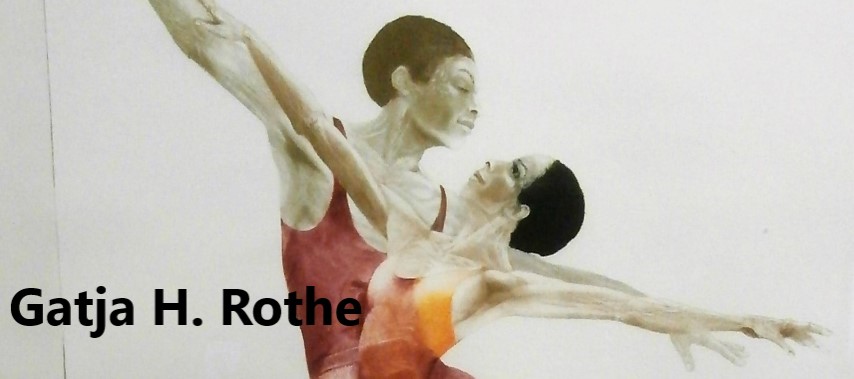


Home
About
Artists
Contact
Testimonials


| Gatja
Helgart Rothe (also known as G.H. Rothe) (March
15, 1935 – August 3, 2007), was a German-American artist
known for her printmaking, especially mezzotint.
She was also a draftswoman and painter. After
living and working in Europe, she briefly traveled
through South America before moving to New York City in
the 1970s and later, California. Rothe was born in 1935 in German Silesia and her family settled in Wiedenbrück, Germany in 1947. In 1956, at age 21, she hitchhiked to southern Germany where she enrolled in painting and drawing classes at the art academy in Pforzheim. There she met her future husband, Curt Rothe, a painting professor and post-impressionist artist. Rothe became increasingly interested in this bohemian counterculture and in the estate’s atmosphere of freedom. In 1958 she married Rothe and developed a body of work that explored the intimacies of bodies and what she called “anatomy landscapes.” She received her first solo show in 1967. In 1968 she was awarded the Villa Romana Prize for emerging German artists and traveled with her son to Florence. For the next year, she was provided with all the materials she needed, allowing her to develop her technique and artistic language, as well as her professional independence. During her stay in Florence, Rothe had a series of shows in Spain. Rothe left Montevideo in 1971 and moved to New York City. She began painting landscapes and skylines, and kept exploring her interest in bodies. In her early paintings in New York she began her explorations with layering, creating compositional narratives out of her experiences in the city. She started attending the ballet and expanded her interest in the body into studies of dancers in movement. She then delved into different printmaking techniques, became intrigued by mezzotint, which, while requiring a high level of skill and patience working by hand directly on the copper, permits the nuance of every line and detail to be seen. Combining the knowledge from her studies in anatomy, art history, goldsmithing, and drawing, she arrived at an original process that allowed her to achieve detailed transparencies with mezzotint. Another innovation was a method of applying and "hand-wiping" all colors on the same plate. Her first mezzotints with transparencies were completed in 1972 and soon garnered a lot of attention. In 1973 she was also designing jewelry for Tiffany’s and other jewelers. In 1978 she was listed in both Who’s Who in American Art and Who’s Who in America. In 1978 she moved to Carmel-by-the-Sea, California although she kept a studio in New York. The open and rural California landscapes influenced her new mezzotints, in which she included mountains, horses and other scenes. Throughout most of the 1980s and 90s, Rothe had about 10 large shows each year in different US cities. Sylvester Stallone and Clint Eastwood, who were her neighbors in Carmel, both own some of her paintings. In 1986 Rothe moved her New York studio from Manhattan to Brooklyn in order to have more space. She began exploring large pastel paintings and creating frescoes at her own home. In 1988 and 1992 she was nominated to represent the United States as an artist at the Olympic Games in Seoul and Barcelona. In 2000 Rothe moved to Geneva, Switzerland, fulfilling a desire to return to Europe. In Geneva Rothe painted mountain landscapes, massive horse paintings, portraits, and other scenes inspired by her surroundings. In 2003 Rothe was diagnosed with breast cancer, but it was a heart problem that led to her death on August 3, 2007. Rothe's highly detailed mezzotints focused on surreal landscapes, intricately rendered horses, and graceful dancers. Rothe started all her prints by sketching a simple drawing directly onto the plate with a drypoint tool. She used a "rocker" tool to develop the background, rolling and rocking it side to side and piercing the plate with tiny holes for the ink. Using a drypoint tool she further developed the fine details and figures of the drawing. Rothe spent approximately 500 hours working on each plate. Rothe expanded the technique's possibilities to achieve transparencies and an extensive variety of tonalities. By discovering a way to mix all colors in the same plate, from the darkest to the lightest, and hand-wiping them into one another, she was able to create highlights, hues, and tones impossible to get when inking each color separately. Saper Galleries owner Roy Saper bought his first mezzotints from Gatje Rothe in 1977. |
Saper Galleries....where
excellence is the standard!




![]()
433 Albert Avenue East Lansing, Michigan 48823 USA (517)351-0815